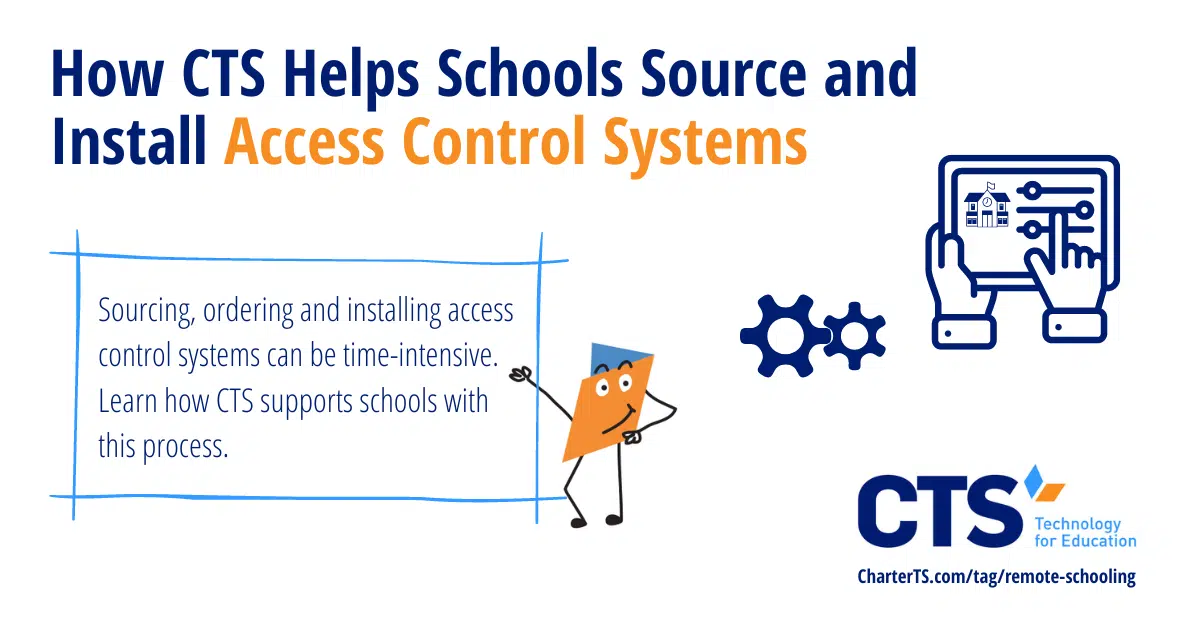Access control systems help school leaders maintain a safe and secure environment.
A key first step to campus safety is a plan for controlling access to a school building and the offices and classrooms within it. In addition to the myriad of other responsibilities that school leaders prioritize, like the quality of instruction and the student and staff culture, the safety of the school community is imperative.
Traditionally, schools have used simple lock and key methods to control access to their building and to limit access to certain areas like offices, faculty lounges, teacher workrooms, staff bathrooms, etc.
While standard lock and key systems are functional, there are some limits to their effectiveness.
Despite the newer technology available to them, which ranges from key cards with proximity readers or keypads with PIN readers to smartphone mobile credentialling or biometric access control options, some schools maintain their traditional lock and key systems. They might not have the budget or the time to source, procure, and install these tech-based systems, and cutting keys is an inexpensive process with no software or additional installation required.
While the savings in time and money is a benefit of using a more traditional entry system, it comes with some risks, limitations, and inconveniences. For example, once a key is lost, the only way to ensure that access is still controlled would be to change the locks. If a staff member loses their key or does not return a key at the end of the school year or if/when they vacate their position, once again, to ensure safety the locks may need to be changed.
Keys can also be duplicated quite easily. The “Do Not Duplicate” inscription that schools and businesses often engrave on keys to limit copying is not legally binding. So while many locksmiths follow the recommendation and will refuse to make a copy of those keys, others may still make a copy for the right price.
Additionally, providing a variety of access levels (for example, giving one staff member access to the teacher’s workroom, their classroom, and the restrooms while giving another staff member access to their office, the supply closet, and the restrooms without just issuing everyone a master key) often requires issuing multiple keys. This means that staff members are carrying around a bunch of keys for spaces they need to access daily which might feel frustrating and inefficient.
Despite these challenges, schools find ways every day to continue to use the traditional key method and implement policies and practices that ease some of these complications and minimize some of these risks.
However, installing a door access control system is an easy approach to solving many of the challenges presented by traditional keys.
For example, many schools will select a key card and proximity reader system. With a key card system, schools can program access levels – giving differentiated access to multiple areas – all on one card. If a card is lost or damaged, it can be deactivated and a new card can be issued. It is also far more difficult to duplicate a key card than it is to copy a key.
After deciding to upgrade to an access control system, the next steps include sourcing, procurement, and installation.
To begin the process, school leaders can ask themselves the following questions:
- What type of access control system is best suited for my school environment? The access control systems market has many options from variations in hardware and software to the use of an on-site server or a cloud-based platform. Cost, scalability, and availability of features (e.g., report types, integration with other school systems, remote management, etc.) are other salient considerations.
- How many internal and external doors does my school building have that need to be secured? Once a system has been selected, having a clear sense of these numbers will prepare a school to actually purchase the hardware and software and be ready for installation.
- Who can support my school with installation? The installation process includes many steps – from hardware installation and wiring to the configuring of the software and training of users – so schools should ensure that they have support from experts.
Time and expertise are required to successfully navigate the sourcing, procurement, and installation process. At CTS, we have the resources and expertise to guide schools through these steps.
At CTS, we help schools make the most of technology so they can accomplish their unique missions.
Our goal is to take care of the technology so that school leaders can focus on teachers, students, and accomplish their schools’ unique missions. Our team has worked with more than 60 schools across the United States to integrate cost-effective technoology in ways that improve school safety and positively impact student achievement. With an unparalleled depth of knowledge in the educational technology space and the technical know-how to solve even the most complex school IT challenges, CTS allows its partner schools to take their educational technology programming to the next level.
Contact us today to learn more about our services and how we can support you with the sourcing, procurement, and installation of systems that increase the safety of your school environment.




